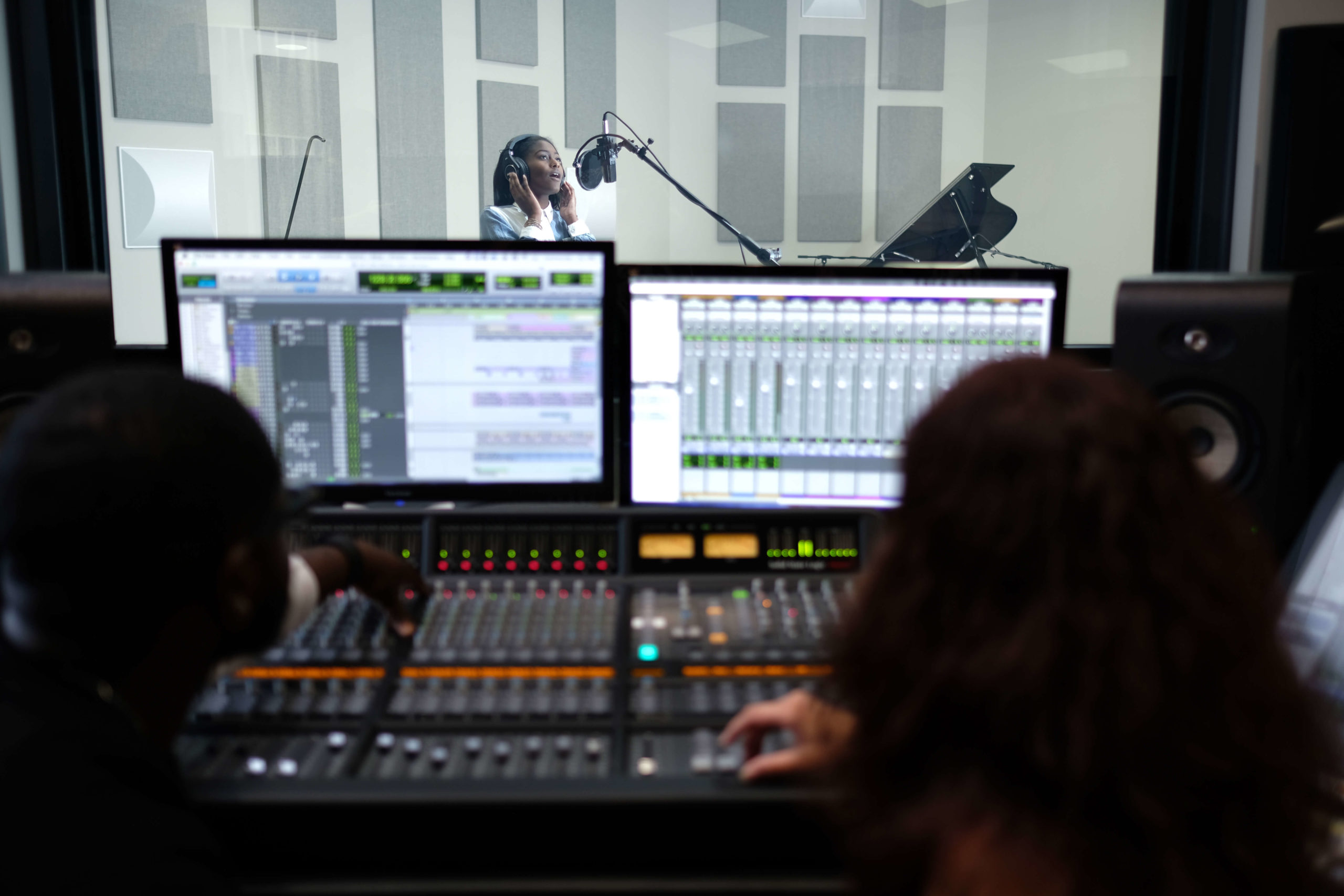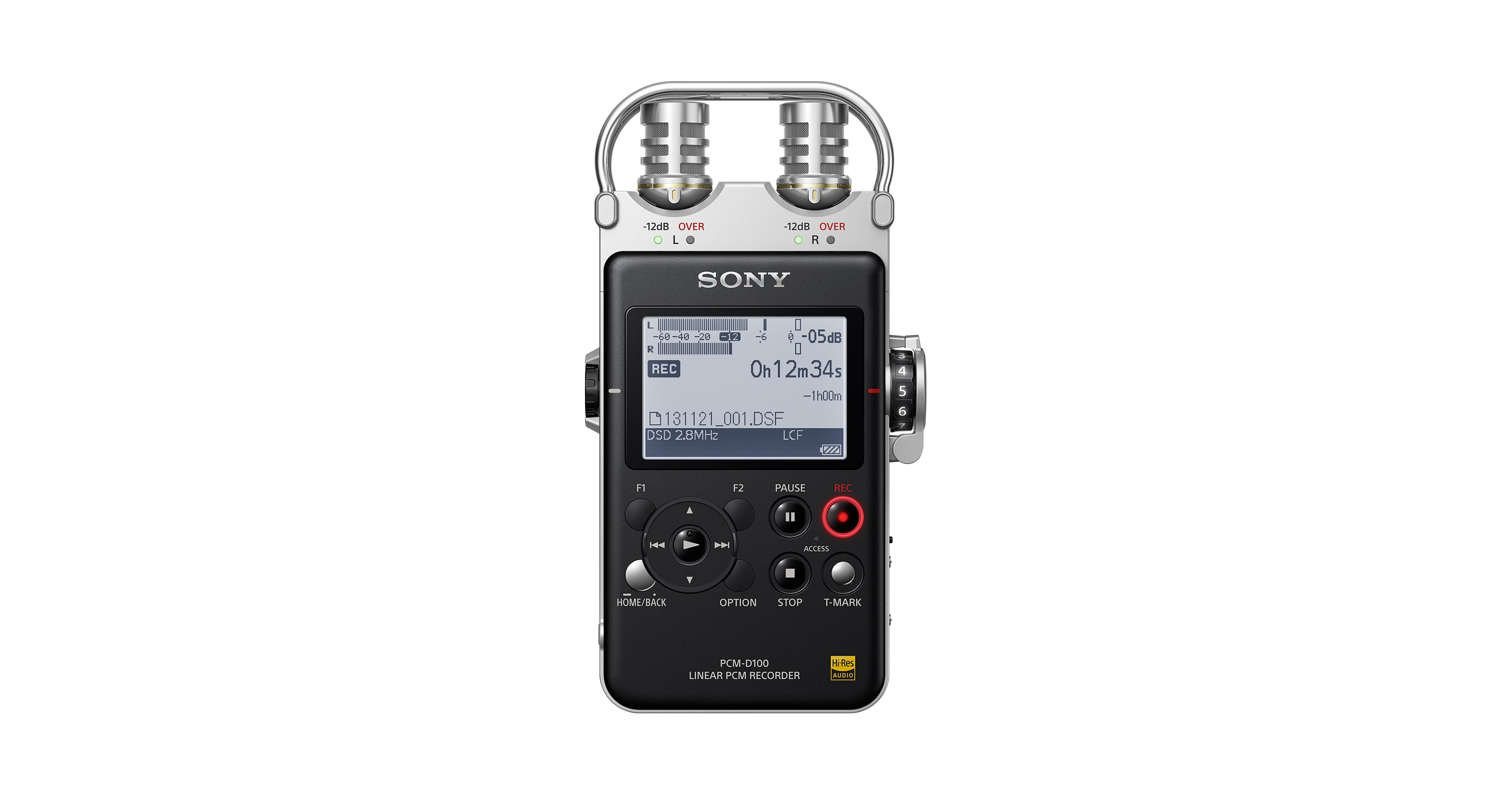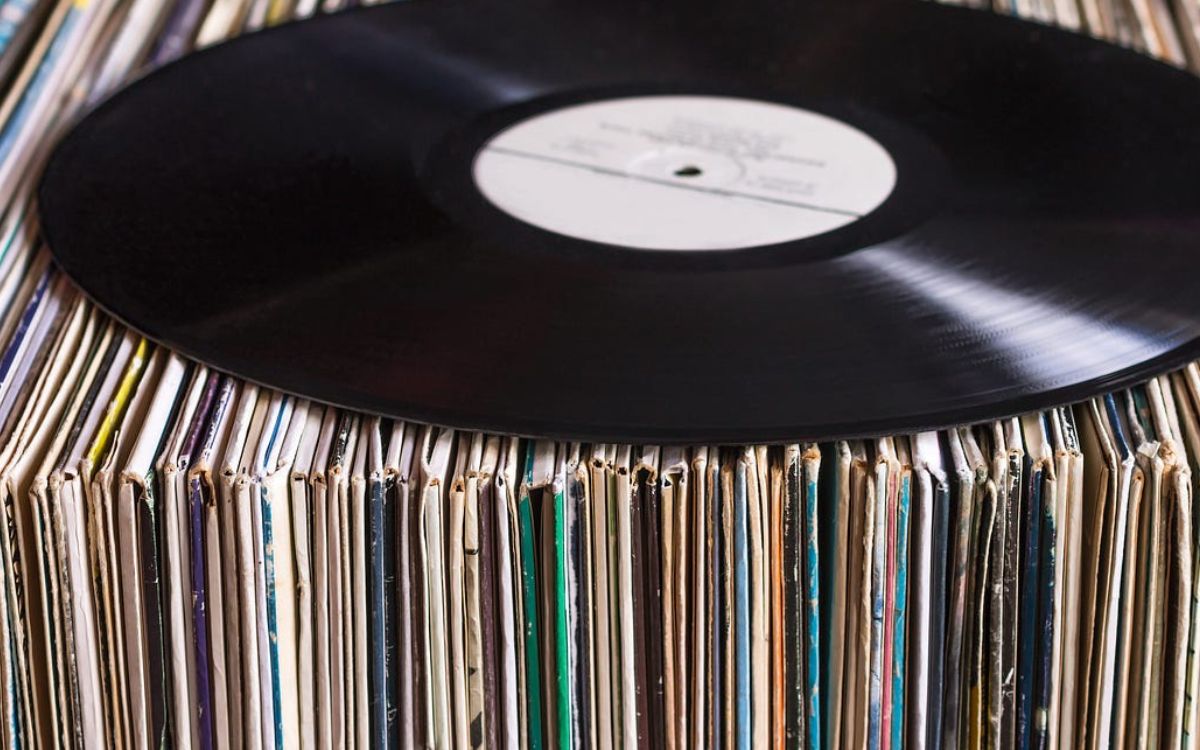Home>Production & Technology>Digital>How Digital Recording And Digital Distribution Have Affected The Music Industry


Digital
How Digital Recording And Digital Distribution Have Affected The Music Industry
Published: March 10, 2024
Discover how digital recording and distribution have revolutionized the music industry, impacting production, marketing, and consumption of music in the digital age. Explore the transformative effects of digital technology on the music industry.
(Many of the links in this article redirect to a specific reviewed product. Your purchase of these products through affiliate links helps to generate commission for AudioLover.com, at no extra cost. Learn more)
Table of Contents
Introduction
The music industry has undergone a remarkable transformation in recent decades, largely due to the advent of digital recording and digital distribution. These technological advancements have revolutionized the way music is created, produced, distributed, and consumed, reshaping the entire landscape of the industry. As we delve into the impact of digital recording and distribution on the music industry, it becomes evident that these changes have not only influenced the production and distribution processes but have also significantly altered the way audiences engage with and experience music.
The evolution of digital recording technology has played a pivotal role in this paradigm shift. With the introduction of digital audio workstations (DAWs) and advanced recording software, musicians and producers have gained unprecedented flexibility and control over the recording process. The transition from analog to digital recording has not only streamlined the production workflow but has also democratized music creation, allowing artists to experiment with new sounds and techniques without the constraints of traditional recording methods.
Furthermore, the rise of digital distribution platforms has redefined the way music reaches its audience. In the past, physical media such as CDs and vinyl records dominated the market, limiting the accessibility of music to physical retail locations. However, the emergence of digital platforms such as streaming services and online stores has revolutionized the distribution model, enabling artists to reach global audiences instantaneously. This shift has not only expanded the reach of music but has also transformed the way consumers discover, access, and engage with their favorite artists and genres.
As we navigate through the intricate web of digital recording and distribution, it becomes apparent that these advancements have ushered in a new era of music consumption. The convenience of streaming services and digital downloads has altered the way audiences interact with music, leading to changes in consumption habits and preferences. Moreover, the proliferation of social media and digital marketing has empowered artists to connect directly with their fan base, fostering a more intimate and interactive relationship between creators and listeners.
In the subsequent sections, we will delve deeper into the impact of digital recording and distribution on music production, consumption habits, sales, and revenue, as well as the challenges and opportunities that have arisen for artists and labels in this rapidly evolving landscape. By examining these facets, we can gain a comprehensive understanding of the profound influence that digital technology has exerted on the music industry, shaping its trajectory and redefining the dynamics of creativity, distribution, and audience engagement.
The Evolution of Digital Recording
The evolution of digital recording has been a transformative force in the music industry, fundamentally reshaping the way music is created and produced. The journey from analog to digital recording technology has not only revolutionized the technical aspects of music production but has also democratized the creative process, empowering artists and producers with unprecedented tools and capabilities.
The inception of digital recording can be traced back to the late 1970s and early 1980s when the first digital audio workstations (DAWs) emerged. These pioneering systems marked a significant departure from traditional analog recording methods, offering a revolutionary approach to capturing and manipulating sound. With the advent of DAWs, musicians and producers gained access to a wide array of digital tools and software, enabling them to record, edit, and mix music with unparalleled precision and flexibility.
One of the defining features of digital recording is its non-linear workflow, which allows for seamless editing, manipulation, and arrangement of audio tracks. Unlike analog tape-based systems, digital recording eliminates the limitations imposed by physical splicing and overdubbing, providing a fluid and dynamic environment for creative experimentation. This shift has not only expedited the production process but has also fostered a culture of innovation and sonic exploration, as artists are no longer bound by the constraints of traditional recording techniques.
Moreover, the advancements in digital recording technology have democratized music production, making it more accessible to a broader spectrum of creators. The affordability and versatility of DAWs have lowered the barriers to entry, enabling aspiring musicians and producers to embark on their creative journey with minimal resources. This democratization has led to a proliferation of diverse musical expressions and genres, as artists harness the power of digital recording to push the boundaries of sonic artistry.
Furthermore, the integration of virtual instruments, digital signal processing, and software-based effects has expanded the sonic palette available to musicians, allowing them to experiment with an extensive range of sounds and textures. This fusion of technology and creativity has catalyzed a wave of innovation, giving rise to new genres and sonic landscapes that were previously unattainable within the confines of analog recording.
In essence, the evolution of digital recording has not only revolutionized the technical infrastructure of music production but has also catalyzed a paradigm shift in the creative ethos of the industry. As we continue to witness the ongoing advancements in digital recording technology, it is evident that its impact will continue to shape the trajectory of music creation, fostering a culture of boundless experimentation and artistic evolution.
The Impact of Digital Recording on Music Production
The impact of digital recording on music production has been nothing short of revolutionary, reshaping the entire landscape of music creation and studio workflows. With the advent of digital audio workstations (DAWs) and advanced recording software, the traditional paradigms of music production have undergone a profound transformation, ushering in a new era of creativity, efficiency, and sonic exploration.
One of the most significant impacts of digital recording is the unprecedented level of flexibility and control it affords to musicians and producers. Unlike the constraints of analog recording, digital technology enables seamless editing, manipulation, and arrangement of audio tracks, empowering artists to refine their musical vision with precision and ease. This non-linear workflow has streamlined the production process, allowing for iterative experimentation and creative refinement without the limitations imposed by traditional recording methods.
Furthermore, digital recording has democratized music production, making it more accessible to a broader spectrum of creators. The affordability and versatility of DAWs have lowered the barriers to entry, enabling aspiring musicians and producers to embark on their creative journey with minimal resources. This democratization has led to a proliferation of diverse musical expressions and genres, as artists harness the power of digital recording to push the boundaries of sonic artistry.
Moreover, the integration of virtual instruments, digital signal processing, and software-based effects has expanded the sonic palette available to musicians, allowing them to experiment with an extensive range of sounds and textures. This fusion of technology and creativity has catalyzed a wave of innovation, giving rise to new genres and sonic landscapes that were previously unattainable within the confines of analog recording.
Additionally, digital recording has facilitated seamless collaboration and remote production, transcending geographical barriers and fostering a global ecosystem of creative exchange. With the ability to share project files instantaneously and collaborate in real-time, artists and producers can engage in collaborative endeavors with unprecedented ease, transcending the limitations of physical proximity.
In essence, the impact of digital recording on music production has redefined the creative process, empowering artists with unparalleled tools and capabilities to realize their musical vision. As technology continues to evolve, the impact of digital recording will undoubtedly continue to shape the trajectory of music production, fostering a culture of boundless experimentation and artistic evolution.
The Rise of Digital Distribution
The rise of digital distribution has revolutionized the way music reaches its audience, fundamentally transforming the traditional paradigms of music dissemination and consumption. With the advent of digital platforms such as streaming services, online stores, and social media, the music industry has witnessed a seismic shift in the distribution model, ushering in a new era of accessibility, global reach, and audience engagement.
Digital distribution has dismantled the barriers imposed by physical media, enabling artists to reach global audiences instantaneously. Unlike the constraints of traditional retail distribution, digital platforms offer a borderless ecosystem where music can traverse geographical boundaries with unprecedented ease. This global reach has not only expanded the audience base for artists but has also facilitated cross-cultural exchange and discovery, fostering a rich tapestry of diverse musical expressions.
Moreover, the convenience and ubiquity of digital distribution platforms have redefined the way audiences discover, access, and engage with music. The emergence of streaming services has empowered listeners to explore an extensive catalog of music from around the world, providing a personalized and immersive listening experience. This shift has not only elevated the accessibility of music but has also catalyzed a culture of musical exploration and discovery, as audiences engage with a myriad of genres and artists at their fingertips.
Furthermore, digital distribution has facilitated direct engagement between artists and their audience, fostering a more intimate and interactive relationship. Through social media and digital marketing, artists can connect directly with their fan base, sharing their creative journey and forging meaningful connections with their listeners. This direct engagement has transcended the traditional boundaries of artist-audience interaction, creating a dynamic ecosystem of mutual appreciation and support.
In essence, the rise of digital distribution has redefined the dynamics of music dissemination, empowering artists to connect with global audiences, and enabling audiences to engage with music in a personalized and immersive manner. As digital distribution continues to evolve, its impact will undoubtedly shape the future of music consumption, fostering a culture of boundless exploration and connectivity between creators and listeners.
Changes in Music Consumption Habits
The advent of digital recording and distribution has precipitated a profound transformation in the way audiences consume music, catalyzing a shift in consumption habits and preferences. The convenience and ubiquity of digital platforms, coupled with the democratization of music production, have redefined the dynamics of music consumption, fostering a culture of exploration, personalization, and immersive engagement.
One of the most notable changes in music consumption habits is the paradigm shift from physical media to digital formats. With the rise of streaming services and online stores, audiences have transitioned from owning physical copies of music to accessing vast digital libraries at their fingertips. This shift has not only elevated the accessibility of music but has also redefined the concept of music ownership, as listeners embrace the convenience of on-demand streaming and digital downloads.
Moreover, the personalized nature of digital platforms has revolutionized the way audiences discover and engage with music. Streaming services leverage algorithms and user data to curate personalized playlists and recommendations, tailoring the listening experience to individual preferences. This personalized approach has empowered audiences to explore a diverse array of genres and artists, transcending the limitations of traditional radio or physical record stores.
Additionally, the advent of mobile devices and wireless connectivity has facilitated a seamless and on-the-go music consumption experience. Audiences can now access their favorite music anytime, anywhere, blurring the boundaries between physical and digital spaces. This ubiquitous access has transformed the way music is integrated into daily life, shaping the soundtrack of everyday experiences and fostering a deeper emotional connection between listeners and the music they love.
Furthermore, the interactive nature of digital platforms has engendered a culture of engagement and participation among audiences. Social media, streaming platforms, and online communities provide avenues for listeners to actively engage with artists, share their musical discoveries, and participate in conversations about music. This participatory culture has democratized the discourse around music, amplifying the voices of audiences and fostering a sense of community and shared enthusiasm for musical exploration.
In essence, the changes in music consumption habits reflect a fundamental reorientation in the way audiences interact with and experience music. The seamless accessibility, personalization, and interactive nature of digital platforms have not only expanded the horizons of music consumption but have also cultivated a culture of exploration, connectivity, and shared musical discovery. As technology continues to evolve, these changes will continue to shape the evolving landscape of music consumption, fostering a dynamic and immersive relationship between audiences and the music they cherish.
The Effect on Music Sales and Revenue
The advent of digital recording and distribution has exerted a profound impact on music sales and revenue, reshaping the economic dynamics of the music industry. The transition from physical media to digital formats, coupled with the proliferation of streaming services and online stores, has catalyzed a paradigm shift in the way music is monetized and consumed, leading to both challenges and opportunities for artists, labels, and the industry at large.
One of the most notable effects on music sales and revenue is the decline in physical album sales and the corresponding rise in digital and streaming revenue. With the widespread adoption of digital platforms, traditional album sales have experienced a significant downturn, as audiences increasingly gravitate towards on-demand streaming and digital downloads. This shift has necessitated a recalibration of revenue models, as artists and labels navigate the transition from physical sales to digital monetization strategies.
Furthermore, the rise of streaming services has introduced a new revenue landscape, characterized by a complex interplay of streaming royalties, subscription models, and advertising revenue. While streaming has expanded the reach of music and provided audiences with unparalleled access to diverse catalogs, it has also sparked debates regarding equitable compensation for artists. The micro-payment structure of streaming royalties has prompted discussions about fair compensation and the sustainability of revenue generation for creators, prompting industry-wide conversations about royalty rates and revenue distribution.
Moreover, the democratization of music production and distribution has led to a proliferation of independent artists and self-released music, disrupting the traditional revenue streams dominated by major labels. Independent artists now have the opportunity to leverage digital platforms to reach global audiences and monetize their music directly, bypassing the traditional gatekeepers of the industry. This democratization has engendered a more diverse and decentralized revenue landscape, empowering artists to retain greater control over their creative output and financial destinies.
Additionally, the rise of digital distribution has facilitated new avenues for revenue generation, such as sync licensing, brand partnerships, and direct-to-fan sales. Artists and labels can now explore a myriad of revenue streams beyond traditional album sales, leveraging their digital presence and audience engagement to forge innovative partnerships and monetization strategies. This diversification of revenue streams has opened up new opportunities for artists to generate income and cultivate sustainable careers in an evolving industry landscape.
In essence, the effect of digital recording and distribution on music sales and revenue reflects a multifaceted transformation of the economic ecosystem, characterized by the decline of traditional sales models, the rise of streaming revenue, and the diversification of monetization strategies. As the industry continues to adapt to these changes, the pursuit of equitable compensation, sustainable revenue models, and innovative monetization avenues will remain at the forefront of industry discourse, shaping the future economic dynamics of the music industry.
Challenges and Opportunities for Artists and Labels
The digital revolution in the music industry has brought forth a myriad of challenges and opportunities for artists and labels, reshaping the traditional paradigms of creativity, distribution, and revenue generation. As artists and labels navigate this rapidly evolving landscape, they are confronted with a host of challenges that demand innovative solutions and strategic adaptation. Simultaneously, this transformative era has ushered in a wealth of opportunities, empowering creators and industry stakeholders to explore new frontiers of artistic expression, audience engagement, and revenue diversification.
Challenges
Navigating Revenue Models
The transition from physical sales to digital and streaming revenue has posed significant challenges for artists and labels. The complexities of streaming royalties, fluctuating revenue streams, and equitable compensation have necessitated a reevaluation of revenue models, prompting industry-wide discussions about fair remuneration and sustainable income generation.
Audience Engagement and Visibility
In an era characterized by information overload and fragmented audience attention, artists and labels face the challenge of cutting through the digital noise to engage with their audience effectively. The democratization of music production and distribution has led to a saturated market, making it increasingly challenging for artists to garner visibility and cultivate a dedicated fan base amidst the abundance of content.
Adaptation to Technological Advancements
The rapid evolution of digital recording and distribution technologies demands continuous adaptation from artists and labels. Staying abreast of technological advancements, digital marketing strategies, and audience consumption habits presents a formidable challenge, requiring a proactive approach to harnessing the full potential of digital innovation.
Opportunities
Direct Audience Engagement
Digital platforms and social media have empowered artists and labels to engage directly with their audience, fostering a more intimate and interactive relationship. This direct engagement presents an opportunity to cultivate a loyal fan base, gather real-time feedback, and forge meaningful connections with listeners, transcending the traditional barriers of artist-audience interaction.
Diversification of Revenue Streams
The democratization of music production and distribution has opened up new avenues for revenue generation, allowing artists and labels to explore diverse monetization strategies such as sync licensing, brand partnerships, and direct-to-fan sales. This diversification of revenue streams presents an opportunity to cultivate sustainable income beyond traditional album sales, fostering financial resilience and creative autonomy.
Global Reach and Accessibility
Digital distribution has facilitated global reach and accessibility, enabling artists to transcend geographical boundaries and connect with audiences worldwide. This global reach presents an opportunity for artists to explore international markets, foster cross-cultural collaborations, and expand their audience base, leveraging the borderless nature of digital platforms to amplify their creative impact.
In essence, while the digital era presents formidable challenges for artists and labels, it also offers a wealth of opportunities for creative innovation, audience engagement, and sustainable revenue generation. By embracing these opportunities and addressing the challenges with strategic foresight, artists and labels can navigate the digital landscape with resilience and creativity, shaping a vibrant and dynamic future for the music industry.
Conclusion
The evolution of digital recording and the rise of digital distribution have indelibly transformed the music industry, reshaping the way music is created, produced, distributed, and consumed. The profound impact of digital technology has permeated every facet of the industry, catalyzing a paradigm shift that has redefined the dynamics of creativity, distribution, and audience engagement.
As we reflect on the transformative influence of digital recording, it becomes evident that the democratization of music production has empowered artists with unparalleled tools and capabilities, fostering a culture of boundless experimentation and sonic innovation. The non-linear workflow, expansive sonic palette, and seamless collaboration facilitated by digital recording have propelled the industry into a new era of creative possibility, transcending the limitations of traditional recording methods.
Simultaneously, the rise of digital distribution has revolutionized the way music reaches its audience, dismantling geographical barriers and redefining the concept of music accessibility. The ubiquity of digital platforms has not only expanded the global reach of music but has also fostered a culture of personalized engagement and musical exploration, empowering audiences to discover, connect, and immerse themselves in a diverse array of musical experiences.
The changes in music consumption habits, the reconfiguration of revenue models, and the emergence of new challenges and opportunities have underscored the dynamic and multifaceted nature of the digital era. Artists and labels are navigating a landscape characterized by both complexity and potential, as they seek to adapt to the evolving dynamics of audience engagement, revenue generation, and technological innovation.
In this transformative landscape, the music industry stands at a crossroads of unprecedented change and possibility. The challenges posed by the digital revolution are met with a wealth of opportunities for creative expression, audience connectivity, and sustainable career development. As artists and labels continue to navigate this digital terrain, the pursuit of equitable compensation, innovative revenue models, and strategic adaptation will remain paramount in shaping a vibrant and resilient future for the industry.
Ultimately, the impact of digital recording and distribution on the music industry transcends the realms of technology and commerce, resonating at the core of artistic expression and human connection. As the industry continues to evolve, the enduring power of music to inspire, unite, and captivate audiences around the world remains a testament to the enduring spirit of creativity and innovation that defines the essence of the music industry in the digital age.











